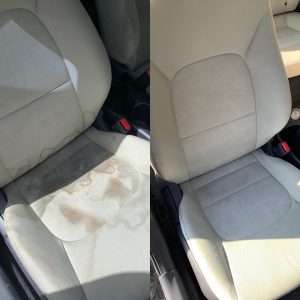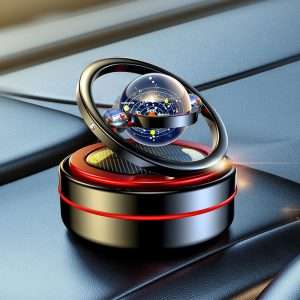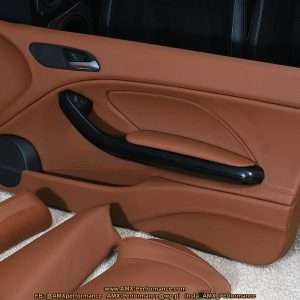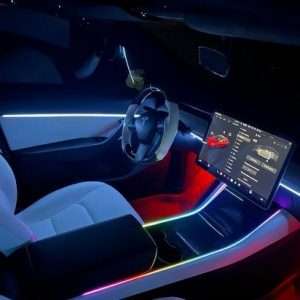Understanding Car Interior Map Lights
Car interior map lights are small lights located inside the cabin of a vehicle, typically near the rearview mirror or in the headliner. They are designed to provide focused illumination for reading maps, finding items, or performing other tasks without distracting the driver. They are very useful.
These lights are usually controlled by a switch, allowing passengers to turn them on or off as needed. Some modern vehicles also incorporate ambient lighting systems that provide a softer, more diffused light throughout the cabin. This is a great feature.
Tip: Always ensure your map lights are off when exiting your vehicle to prevent battery drain. A dead battery is never fun!
Types of Map Lights
Several types of map lights are available, each with its own advantages:
- Incandescent Bulbs: Traditional and inexpensive, but less energy-efficient and have a shorter lifespan.
- LED Bulbs: More energy-efficient, longer-lasting, and produce brighter light. A great choice for upgrading.
- Halogen Bulbs: Brighter than incandescent bulbs but generate more heat.
Choosing the right type depends on your needs and preferences. Consider brightness, energy efficiency, and lifespan when making your decision. Think about the color temperature too!
Replacing Your Map Lights
Replacing a map light bulb is a relatively simple task that most car owners can do themselves. It saves money.
Steps for Replacement:
- Consult your vehicle’s owner’s manual to identify the correct bulb type.
- Gather the necessary tools, such as a small screwdriver or plastic pry tool.
- Carefully remove the lens cover of the map light.
- Remove the old bulb and insert the new one.
- Replace the lens cover.
If you’re unsure about any step, consult a professional mechanic. Safety first!
Important: Disconnect the car battery before replacing any electrical components to prevent short circuits or electrical shock. This is a crucial safety precaution.
FAQ: Frequently Asked Questions
Troubleshooting Common Issues
Sometimes, your map lights might not work as expected. Don’t panic! Here’s a quick guide to common problems and how to address them. A systematic approach is key.
Light Doesn’t Turn On
First, check the simplest things. Is the switch in the “on” position? It sounds obvious, but it’s easily overlooked. Next, inspect the bulb itself. Is it visibly burnt out? If so, replace it. If the bulb looks fine, the problem might be a blown fuse. Consult your owner’s manual to locate the fuse box and identify the fuse for the interior lights. Replace the fuse with one of the same amperage.
If none of these steps work, there could be a wiring issue. This is best left to a qualified mechanic. Don’t attempt to repair wiring yourself unless you have experience.
Light Flickers
A flickering map light often indicates a loose connection. Check the bulb socket to ensure the bulb is securely seated. Also, inspect the wiring harness connected to the map light assembly. A loose or corroded connector can cause intermittent contact. Clean the connector with electrical contact cleaner and ensure it’s firmly attached.
In rare cases, flickering can be caused by a faulty switch. If cleaning the connections doesn’t resolve the issue, consider replacing the switch.
Dim Light
A dim map light can be a sign of a weak bulb, a corroded connection, or a voltage drop. Start by replacing the bulb with a new one. If the problem persists, check the wiring and connectors for corrosion. Clean them thoroughly. A voltage drop can be caused by a poor ground connection. Ensure the ground wire for the map light assembly is securely attached to a clean, unpainted metal surface.
Pro Tip: Use dielectric grease on electrical connections to prevent corrosion and ensure a good connection. This is especially helpful in humid environments.
Upgrading Your Map Lights
Looking to enhance your car’s interior lighting? Upgrading your map lights is a great way to do it. There are several options available, from simple bulb replacements to complete lighting system upgrades.
LED Conversion
Switching to LED bulbs is one of the most popular upgrades. LEDs offer several advantages over traditional incandescent bulbs, including brighter light, lower energy consumption, and longer lifespan. When choosing LED bulbs, make sure they are compatible with your vehicle’s electrical system. Some vehicles may require resistors to prevent error messages or flickering.
- Consider the color temperature: Choose a color temperature that suits your preferences. Warmer temperatures (around 3000K) provide a softer, more inviting light, while cooler temperatures (around 6000K) offer a brighter, more modern look.
- Look for CAN bus compatibility: If your vehicle has a CAN bus system, choose LED bulbs that are specifically designed to be compatible. This will prevent error messages and ensure proper operation.
Adding Ambient Lighting
For a more luxurious feel, consider adding ambient lighting to your car’s interior. Ambient lighting systems typically consist of small LED lights that are strategically placed throughout the cabin to provide a subtle, diffused glow. These systems can be controlled by a switch or integrated into the vehicle’s infotainment system.
Installation can range from simple plug-and-play kits to more complex custom installations. If you’re not comfortable working with electrical wiring, it’s best to have a professional install the ambient lighting system.
Custom Lighting Solutions
For the ultimate in personalization, consider custom lighting solutions. This could involve adding additional map lights, changing the color of the existing lights, or even creating a unique lighting design. Custom lighting solutions are typically more expensive and require professional installation, but they can significantly enhance the look and feel of your car’s interior.
Remember: Always prioritize safety when modifying your car’s electrical system. If you’re not sure what you’re doing, consult a qualified professional.
Maintaining Your Map Lights
Proper maintenance can extend the life of your map lights and ensure they function optimally. Regular checks and preventative measures are key. A little effort goes a long way.
Regular Inspections
Periodically inspect your map lights to ensure they are working correctly. Check for dimness, flickering, or complete failure. Address any issues promptly to prevent further damage or inconvenience. A quick visual check is all it takes.
Cleaning
Dust and debris can accumulate on the lens cover of your map lights, reducing their brightness. Clean the lens cover regularly with a soft cloth and mild cleaning solution. Avoid using harsh chemicals or abrasive cleaners, as they can damage the plastic. A clean lens makes a big difference.
Preventing Corrosion
Corrosion can damage the electrical connections of your map lights, leading to malfunctions. Apply dielectric grease to the bulb socket and wiring connectors to prevent corrosion. This will help ensure a reliable connection and extend the life of your map lights. Prevention is better than cure.
Replacing Bulbs Promptly
If a map light bulb burns out, replace it promptly. A burnt-out bulb can put extra strain on the remaining bulbs, causing them to fail prematurely. Replacing bulbs in pairs is a good practice to ensure consistent brightness and color. Don’t wait until both bulbs are out.
Protecting from Moisture
Moisture can damage the electrical components of your map lights. Avoid exposing your car’s interior to excessive moisture, such as leaving windows open during rain. If your car’s interior gets wet, dry it thoroughly to prevent corrosion and other damage. Keep your interior dry.
Safety First: Always disconnect the car battery before performing any electrical work on your vehicle. This will prevent electrical shock and damage to your car’s electrical system. Safety is paramount.
Choosing the Right Bulbs
Selecting the correct replacement bulbs for your map lights is crucial for optimal performance and safety. Consider several factors before making a purchase. Informed choices are best.
Bulb Type
Consult your vehicle’s owner’s manual or an online bulb finder tool to determine the correct bulb type for your map lights. Using the wrong bulb type can damage your car’s electrical system or result in poor lighting performance. Get the right type.
Brightness
Choose a bulb with the appropriate brightness for your needs. Brighter bulbs provide better illumination, but they can also be more distracting. Consider the intended use of your map lights when selecting a bulb brightness. Consider your needs.
Color Temperature
Color temperature is measured in Kelvin (K) and refers to the color of the light emitted by the bulb. Warmer temperatures (around 3000K) produce a yellowish light, while cooler temperatures (around 6000K) produce a bluish-white light. Choose a color temperature that suits your preferences and complements your car’s interior. Choose wisely.
Lifespan
Consider the lifespan of the bulb when making a purchase. LED bulbs typically have a longer lifespan than incandescent bulbs, making them a more cost-effective option in the long run. Longer life saves money.
Brand Reputation
Choose bulbs from reputable brands to ensure quality and reliability. Cheaper, off-brand bulbs may not meet safety standards or provide consistent performance. Quality matters.
- Read reviews: Check online reviews to see what other customers have to say about the bulbs you’re considering.
- Look for certifications: Look for bulbs that are certified by reputable organizations, such as UL or CE.




